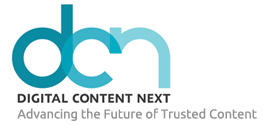Amid nonstop news cycles and rising media skepticism, one audience remains deeply engaged and increasingly strategic in how they consume information. Decision-makers in the UK aren’t just reading the news; they’re curating it across various platforms, formats, and technologies to stay ahead of the curve.
Portland’s Decision Makers and the News research explores this dynamic in depth and takes a deep look at the media habits of UK professionals, what sources they trust, and how their habits are evolving. The findings shed light on a critical audience that often shapes public discourse while navigating a constantly evolving digital landscape.
Curators, not merely consumers
The report confirms that decision-makers are not passive news consumers. They are intentional curators of their media diet. While 41% of the UK public say they actively seek out news, the number rises to 56% among decision-makers. They build a personalized portfolio of sources, balancing legacy outlets like The Guardian and BBC with emerging platforms like Substack, Medium, and YouTube.
Notably, this group reads deeply and broadly. While traditional print brands remain influential, 60% of respondents still read newspaper content; digital and audio sources are also firmly entrenched. Nearly 80% of decision-makers subscribe to at least one news-focused email newsletter, and 42% regularly listen to news podcasts, double the national average.
AI is changing decision-makers’ media habits
Interestingly, 81% of decision-makers use AI tools to stay informed, nearly twice the rate of the general population. Platforms like ChatGPT, Google Gemini, and Microsoft Copilot are becoming go-to sources for clarity and context. For 8% of respondents, AI is already their first stop when seeking further information on a story, just shy of Wikipedia’s 10%. This shift highlights a new layer of influence: what AI tools see and how they weigh information may shape the perceptions of this elite audience.
While their media habits are evolving, decision-makers continue to place a high value on trusted news institutions. The Guardian emerges as the top newspaper brand among this group in terms of consumption and trust, followed by The Times, The Sun, and the Financial Times. On the broadcast front, the BBC remains dominant, reaching 79% of decision-makers and earning the highest trust rating (56%). YouTube, interestingly, is now the third most-trusted video platform (47%).
A preference for digestible short form media
Though highly engaged, decision-makers are not immune to news fatigue. One-third say they’re less interested in news than they were a year ago, with lack of time cited as the top reason. In fact, 39% prefer short-form articles over long-form content, nearly double the 21% who still favor in-depth readings.
Newsletters are a clear winner, with the BBC News Daily, Politico Playbooks, and Guardian briefings among the most popular. Podcasts also thrive, with “Sky News Daily” and “The Rest is Politics” topping the charts.
In today’s media ecosystem, the most influential sources are those that score high on both trust and consumption. The report’s “trust matrix” shows that the BBC, The Guardian, YouTube, and Instagram sit at the intersection of those two forces. These are the formats and platforms that shape the conclusions of decision-makers.
These findings show that reaching today’s influential decision makers demands a multi-format strategy built on trust and optimized for AI. Traditional outlets remain important, but so do newsletters, podcasts, LinkedIn posts, and being visible in AI-generated summaries. In this landscape, brevity and discoverability are as critical as reach.






















